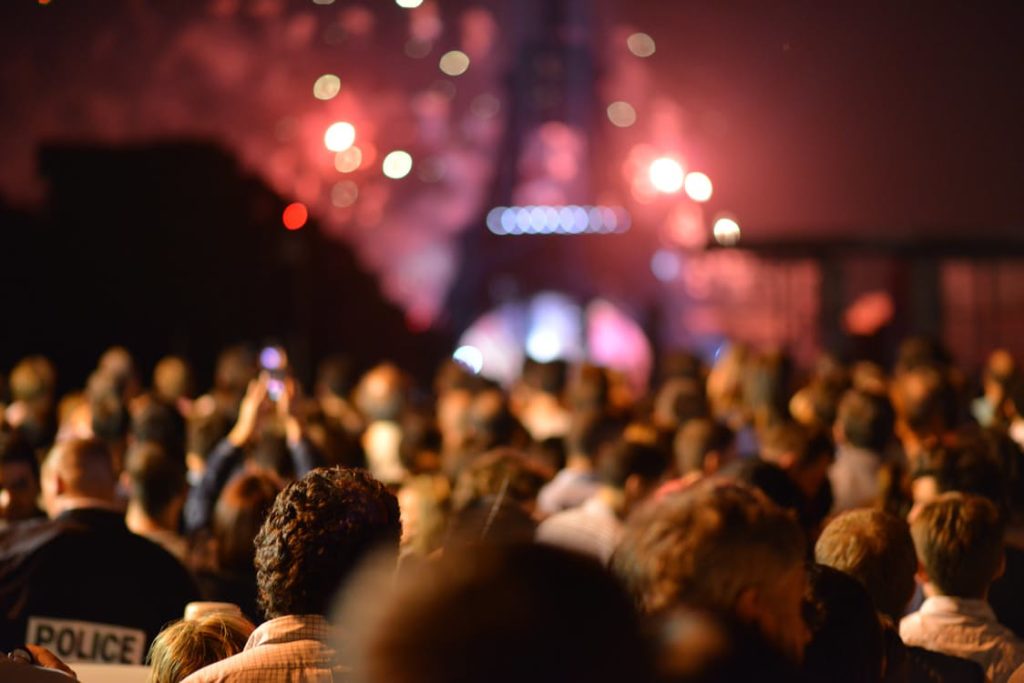After the election of President Trump, Mark Lilla pleaded for the end of “identity liberalism,” claiming that its insistence on difference came at the expense of the commonality needed for the polity to succeed. His advice seems unheeded, however, as David Brooks notes in critiquing the Women’s March as the same “shockingly hollow identity politics” that has “doomed them so often.”
Not to be outdone, Richard B. Spencer, a self-described “identitarian,” continues to make news after being assaulted after the inauguration, with some describing the violence as a “transcendental experience” for anyone identified with the “black-bloc.”
Identity politics are here to stay, it would seem, on left and right. Shuja Haider notes the appropriation of identity politics by the “alt-right.” The safety pin worn by progressives signaling themselves as a “portable safe space” is now mirrored by similar “identitarian” tactics of white nationalists. As she puts it, the leaders of the alt-right are “clearly intimately acquainted with both academic left philosophy and campus social justice activism.”
A similar point is made by Sohrab Ahmari in The New Philistines: How Identity Politics Disfigure the Arts. This short book, really an essay, analyzes identity politics in contemporary art, although, as Ahmadi reminds us,
Start your day with Public Discourse
Sign up and get our daily essays sent straight to your inbox.ideas that begin with elite, avant-garde institutions invariably trickle down to popular culture, then go on to impact our daily lives. If our politics seem to get more intolerant and illiberal by the day, if social alienation is on the rise, and if people are coarser to each other than ever before—these are all things that can be traced, at least in part, to the conquest of the arts by the New Philistines.
While the arts have always asked questions about identity and purpose, “the identitarians” are indifferent to genuinely human questions because they “think they already have the answers.” Their answers, unfortunately, are a hackneyed “set of all-purpose formulas about race, gender, class and sexuality, on one hand, and power and privilege, on the other.” The older ideals of art “have all been thrust aside to make room for the art world’s one totem, its alpha and omega: identity politics.” So drearily uniform are these categories that Ahmari asks, “what does it say about the Free World today, that much of our art is so doctrinaire, so incapable of conveying any meaning other than the imperatives of identity politics?”
Examining the (mis)treatment of Shakespeare at the Globe Theatre, Ahmari complains that despite lip service to the inclusion of marginalized voices, the New Philistines are “rarely capable” of “sincere, rigorous encounter” with those sources. Real engagement “requires really listening to such voices in all their rich complexity,” while identitarians reduce individuals to their group in order “to bash the ‘dominant’ culture.” Identitarians merely use the marginalized, since “opposing the ‘oppressive’ mainstream is more important than examining the peripheral as it really is.” Thus the Globe appropriates Bollywood as “flavor in a garish cultural and period mishmash” and distorts sexuality into “PC cant, fit for little more than college-dorm sensitivity training.” Actual cultures are caricatured: “this way of thinking about art denies individuality and agency to these groups. They become political types, stand-ins for ideological causes . . . rather than individual souls, fallen like all of us but possessed of a free will and therefore responsible for their destinies.” The power of art, let alone its beauty, is lost, and the really human things are squelched. Identity politics “can’t grapple with individuality, with things of the soul, with the inner life—the very things that draw most of us to art in the first place.”
Identitarians reduce everything to “a script imposed by power relations.” Not only masculinity and femininity, sexuality and love, but also judgments about beauty and worth, goodness and truth. Further, since everything is reduced to the “performativity” of power, any sense of art forming or expressing the inner life of the soul is nonsensical. In the end, there is no inner life; everything serves the external political demands of social justice.
In an earlier phase, identity politics promoted the visibility of groups thought marginalized, such as women or racial and sexual minorities. Progressive culture went out of its way to identify those excluded groups—those rendered invisible—and sought to “grant them a seat at the table and a chance to represent themselves.” Once recognized, these excluded groups could be accepted, even celebrated—one thinks, for instance, of the prevalence of homosexual characters on television, represented beyond their statistical presence in society.
Identitarians run into an odd problem, however. Classical liberalism turns out to be fairly expansive when it comes to including those previously at the margins. Formerly excluded groups rise up, “win legal emancipation and cultural acceptance,” and are “absorbed into the fabric of liberalism.” While many consider this moral and political progress, identitarians view it as a sinister threat, since liberalism’s willingness to welcome the stranger turns transgression into innocuous kitsch. Consequently, inclusion becomes unpalatable: “today’s identitarians aren’t out to rectify the West’s shortcomings. Contemporary identity politics are deeply illiberal. The art-world identitarians are committed, at least on paper, to overthrowing liberal order.”
“Having exhausted visibility’s utility for their political agenda, the identitarians now sneer at the concept,” for they need the West to be as “monstrously intolerant as ever.” In order to justify their politics, they “must always be under siege,” and being welcomed by classical liberalism risks demilitarizing social life. Identity politics live to destroy, not to attain peace and acceptance.
This need to usurp and wreck explains, in part, the rejection of individuality and interiority accompanying identity politics. Classical liberalism holds that “rights inhere in the individual, and governments exist to protect” these individual rights. Because all are created equal without respect to group identity, individuals can “relate to each other notwithstanding differences of race, class, sex and so on.” Identity politics prefer illiberality precisely because classical liberalism renders individuals “legible” to and “commensurable” with each other. You and I may differ in race, religion, class, sex, and taste, but we are equal individuals before God, the law, and each other. Beginning from this basic equality, our differences are made intelligible and sympathetic, for I can begin to understand how your rights may have been impinged, and my empathy for you can grow. I, as an individual, can develop an interior life that becomes more caring, responsive, and welcoming of your experiences, your differences, and your pains; including the pain of your exclusion and marginalization.
For this reason, classical liberalism supports and requires a rich interior life and an education heightening our ability to learn from others. At the same time, individuals can express and make intelligible their own interior life and experience, what some term an “expressivist” account of identity. Classical liberal culture “insists there is something in each of us, something unique and immutable, that can’t be reduced to group identities such as race, nationality, gender, sexuality” and that “great art has long made it its business to articulate that irreducible something.” In articulation or expression, the individual shapes herself and grows, even as her articulation allows others to resonate, learn, and develop.
Identitarians won’t have it. To maintain their political mission, they must, by their own logic, reject individuality, the interior life, the possibility of moral growth, and any sense that individuals can, in real and profound ways, communicate themselves. Despite the verbiage, they “celebrate individual difference, so long as you are different in the same way.” In the end, identitarians’ rejection of classical liberalism requires them to reject human persons as they actually are in their concrete individuality, reducing everyone to a caricature of some supposed mass identity, an identity that must never be translated, expressed, or welcomed by the dominant culture. Every group generates its own unique “narrative” that is entirely incommensurable with any others, an absolute relativism of standards. (Although somehow, mysteriously, the ideal of social justice remains universally normative.)
A war of every group against every other is thus the sine qua non of identity politics. The peacefulness of classical liberalism is rejected root and branch, for war is the goal.
This explains, in part, why contemporary art is so obnoxiously insulting, with standards of decency and beauty not merely overlooked but rejected. Art exerts power against the observer, although always in the same drearily conformist manner, the artists “inspired by nothing—nothing, nothing, nothing—but the politics of representation, ‘performativity,’ gender, race, queer theory etc.” Even in its crass vulgarity, it’s numbingly boring.
Boring, yet it coarsens the public square. Our cultured leaders cry “civility, civility” even as their commitments sunder our common life. Identity warfare must be permanent, unending, intractable, and, as Ahmari and Haider warn, the alt-right now wants “its slice of the identitarian pie.” Claims of fear, terror, homelessness, and danger following the recent election are hardly surprising, for the alt-right is the bastard child of identity politics, and not a lovable one.
Meanwhile, those of us who believe in the ultimate value and irreducibility of the individual person have good news to offer, for we are in fact equal and intelligible to each other. And, to the surprise of the identitarians, it is precisely the universality and normativity claimed by classical liberals, natural lawyers, and many religious believers that provides the basis for peace, justice, understanding, and moral progress.
Ahmari has thrown down the gauntlet in The New Philistines. It’s unlikely that the smugly complacent practitioners of identity politics will heed him, but serious men and women would do well to spend an hour or two with this fine little book. It deserves a wide audience, especially given the rage and violence of our time.













